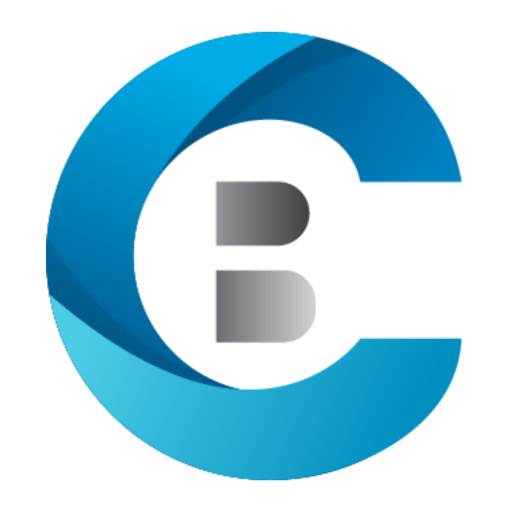What is a Sales Enablement?
Training your reps to sell is known as sales enablement. You mentor them, provide them with training and certifications, and organize events like sales kickoffs to bring them together. Any assistance you can provide will help them close more sales quickly.
The challenging query is then posed: “Did it work?
Sales leaders are under pressure to develop enablement that actually affects revenue targets and demonstrates its effectiveness. This manual will demonstrate how. We’ll go through every detail of sales enablement, including what it is, why it’s important, and how to assess its effectiveness.
To assist sales reps with onboarding, skill development, and selling, sales enablement uses content, coaching, training, and technology. Leaders in sales enablement are concerned with boosting output, having a tangible influence on the business, and expediting the release of training materials.
Why is sales enablement important?
Sales are difficult. Often, at the start of a negotiation, your reps are presented with a sizable blank space. What is the plan, who are the stakeholders, and which deal specifics are crucial? They must comprehend the issue and offer a resolution. Sales enablement is crucial because of this. Sellers will find it difficult to move prospects through the sales pipeline without training and direction. Poof! Your revenue is gone.
Here are some major issues representatives encounter while arguing in favor of sales enablement.
Expertise is demanded of sellers. 74% of sellers claimed their jobs are changing from being transactional to being more consultative in a June 2022 ASP Sales Enablement poll. To add more value to each conversation, sales representatives need to have a deeper understanding of the market, the consumer, and the product.
In a hybrid world, sales are difficult. According to 58% of respondents in the same survey, selling online is more difficult than selling from an office. Yet only 29% have received the necessary training. Sellers need to develop their ability to be equally effective in front of and behind a screen.
There is less margin for mistakes when there is economic uncertainty. The stakes are raised by market turmoil, and sellers are under pressure to maintain revenue levels. Nowadays, it’s not just about growth, but also efficacy. Sellers must work harder with less.
If done correctly, enablement can save the day. The Harvard Business Review claimed earlier this year that “enablement in leading firms is entrusted with actual capability building — and not merely restricted to onboarding and training.”
In other words, personalization is necessary for sales enablement. Reps must be taught more than just the fundamentals. Giving them the knowledge and resources they require is essential if we want them to develop into closing machines in a world of question marks. We outline strategies for success below.
How can sales enablement be successful?
Put an end to drafting general-purpose training plans and hoping for the best. To be successful in sales enablement, first decide on a clear, quantifiable revenue objective. Then, provide training that will help you get there. Monitor your progress as sellers’ behaviors change, and adjust as necessary to prepare the road for effective growth.
1. Decide on an enablement objective.
It should be simple to complete. You begin to consider it as soon as you awake. What particular key performance indicator (KPI) poses the greatest threat to the company?
Think about these metrics.
Ramp time: This is the amount of time it takes new sales representatives to adjust and become fully productive. To maintain high sales productivity even when seasoned sales professionals leave, taking all of their knowledge with them, and reducing ramp time is essential.
The percentage of closed deals in your pipeline is known as the win rate. Your sales representatives are proficient at closing if your win rate is high. Too many of your deals will vanish into thin air if you have a poor win rate.
Deal size: This is the sum of all closed deals. It might seem clear that you should close bigger deals if you want to earn more money. However, businesses frequently neglect to train their salespeople on how to boost deal sizes, whether it be by pairing customers with more expensive products or by pushing upsells, bundles, and add-ons.
The length of the sales cycle is the time it takes for a cold lead to become a hot deal for one of your sellers. Your sales cycles must be cut short if you want to increase production and efficiency. Your sales representatives should close more sales more quickly.
Define a target goal after determining the KPI you wish to modify. If the deal size is an issue, for instance, you might wish to raise the average deal amount that quarter by 20%.
2. Specify the behavior change that is required.
Once you have a goal in mind, consider how the seller’s actions may affect it. Using the aforementioned example, if your objective is to raise the average deal value by 20%, you may look at the biggest deals you’ve closed and analyze the sales discussions that preceded them.
Using a sales call analysis tool like Einstein Conversation Insights, you may observe conversation specifics like how frequently and in what context particular keywords are used.
You might discover, for instance, that your largest sales occur when sales representatives offer on value rather than on price. You could decide to make 20% fewer sales calls this quarter that involves discounting in order to teach your sellers to quit harping on costs so much.
3. Use fresh instructions to mold the new behavior.
Next, concentrate on developing the precise training that will be the catalyst for the behavior change. You may, for instance, develop modules that explain to your sellers what it actually means to sell on value (for example, highlighting business benefits over cost savings). You might therefore instruct sales representatives to address objections with value rather than a discount at each stage of the sales process. Finally, you may plan coaching sessions that offer representatives individualized advice if they begin to falter.
Each of these workouts can develop into a benchmark that you can monitor as reps finish them. When you can, incorporate this training into a rep’s everyday tasks because it is more effective for them to learn while also selling.
4. Adjust, discover, and repeat.
How is it going, then? Check-in frequently (at least once every quarter) to see how your enablement is performing. Have your sellers achieved their goals? Has the altered conduct had any effect? Perhaps your prediction that value selling will lead to larger deals was incorrect, or perhaps the training itself wasn’t successful.
Determine what is or is not effective. Once adjusted, aim towards the target. Whatever occurred, you have learned from it and are better prepared to confront a new quarter.
Let’s look at best practices for creating a well-oiled sales enablement machine now that you understand how to accomplish and measure enablement success.
What are the ideal methods for a program that enables sales?
The main goal of sales enablement should be to improve your training by making it more personalized, data-driven, and relevant. Bring in technology to help you use your data more effectively. Then, provide your sales representatives with the training they require at the appropriate time, taking into account their individual learning preferences.
Here are 3 best practices to keep in mind.
Use a CRM to link enablement and customer information.
Your fuel is customer relationship management (CRM) software. It provides you with access to your data so you can check how each rep is doing. Track your top-line objective’s impact on sellers’ actions as they reach enablement milestones on their path to quota.
Introduce sellers into the job flow.
In conventional onboarding, the CRM is not connected to the training tools (think stand-alone content libraries). Since accelerating ramp time can accelerate revenue, the best strategy today is to get reps selling even as they are onboarding and learning. When you carry out both simultaneously, salespeople can mark off accomplishments as they advance consumers in the pipeline, such as activities finished and meetings scheduled.
Train in bites, not feasts, and do your reps.
Stop supplying merchants with a tonne of material. They become overburdened. Make digestible learning modules and deliver them at the appropriate times. For instance, a new rep who wants to send a quote to a customer might get a CRM alert with simple instructions on how to expedite the process and follow up.
To aid your reps in learning, compile a library of resources.
The proper information must be delivered at the right moment in order for enablement to be effective. The following are typical types and examples of how to apply them in your own enablement program:
Customer stories: Records that describe how and why consumers used your products, as well as the advantages they obtained.
Presentations on issues, market trends, and product offerings for sales dialogues are included in product slide decks.
E-books: A customer-downloadable manual that frequently focuses on important issues and trends.
Datasheets: A list of a product’s essential components, including use cases, features, and outcomes.
Demonstrations of products: Videos and presentations that go through their main features.
Competitive intelligence is the study of your rivals to determine how you differ from them and how you fit into the market.
Even as sales enablement moves online, traditional content will always have a place. The secret is to provide a variety of content to accommodate various learning styles and themes, then deliver it when it’s most needed. Technology is useful. We’ve listed some crucial sales enablement resources below to get you started.
Click here to know more details
Click here for more Blogs


